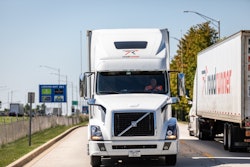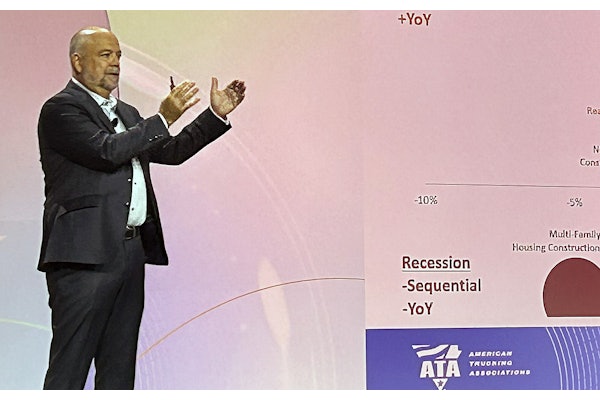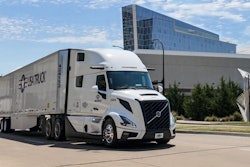
Driver safety is top of mind for fleet managers, carriers, and logistics providers across the U.S.—and for good reason. The U.S. Bureau of Labor Statistics and the Centers for Disease Control and Prevention (CDC) have concluded that vehicle (light and heavy) crashes are the leading cause of work-related fatalities, resulting in more than 17,000 worker deaths from 2011 to 2020.
If you examine the trucking industry specifically, large trucks were involved in 415,000 police-reported crashes in the U.S. in 2020, including 4,444 fatal crashes, according to data from the Federal Motor Carrier Safety Administration (FMCSA). And the issue isn’t improving: in 2021, 4,714 people died in large truck crashes, a 17% increase compared with 2020—and a 50% increase since 2009.
Safety risks
Not surprisingly, safety risks for drivers are significantly linked to high-risk driving habits and behavior, such as distracted driving (e.g., texting, eating, talking on the phone), failure to use a seatbelt, driver fatigue, and aggressive driving (e.g., speeding, tailgating, erratic lane changing). Another safety risk is employing drivers who are tasked with making time-sensitive deliveries or pick-ups, with minimal commercial vehicle training. These drivers bring their car-driving habits into their commercial vehicle, which often leads to an elevated number of accidents due to greater blind spots, a wider turning radius and the larger height and width of commercial vehicles. While safe driving translates more easily from a commercial vehicle to car, it’s much more challenging from a car to a commercial truck without effective training.
According to National Highway Traffic Safety Administration (NHTSA) data, distracted driving killed 3,522 people in 2021. Carriers must also contend with aggressive driving behavior, a major driver danger; speeding alone was a contributing factor in 29% of all traffic fatalities in 2021. Similarly, poor compliance with seat belt regulations is a serious safety risk. In 2020, nearly half of large truck occupants involved in fatal crashes were not wearing a seat belt, according to FMCSA.
Enterprise-wide repercussions
Transportation companies who neglect to prioritize safety within the organization clearly risk the personal safety of their drivers, and other drivers/passengers on the road. Neglecting safety measures can also be a costly mistake, impacting the bottom line, directly and indirectly.
Since fleet insurance policies tend to exclude intentional acts, carriers involved in accidents caused by high-risk driver behavior will see their insurance premiums skyrocket, or insurance companies may drop coverage entirely. Carriers may face costly claims as a result of motor vehicle accidents, accompanied by workers’ compensation claims for injuries incurred.
In addition to the drop in transportation productivity that takes a bite out revenue in the event of an accident, carriers who neglect fleet and driver safety may also face expensive fines for failure to comply with government safety regulations.
Plus, on a less tangible level, the brand reputation of carriers with poor safety records will suffer, compromising their ability to attract both new business and new drivers. Against the backdrop of the ongoing driver shortage and tight labor market, transportation providers can’t afford to impede their ability to recruit—and retain—drivers.
Fostering a culture of safety
Building a culture of driver safety underpins operational, financial and reputational health for commercial carriers. And fleet managers are paying attention, embracing the goal of reducing accidents to keep drivers and those around them safe, while also recognizing that a safe fleet is a more cost-efficient fleet. Notably, in a 2023 survey of commercial fleet managers, 48% of U.S. respondents ranked driver safety as a top operational priority.
While training drivers effectively and efficiently is challenging and may be met with resistance from drivers, leading carriers today recognize the foundational importance of a safety-first culture and are implementing holistic driver safety programs and technologies to mitigate risk.
A view into driving behavior
With the aim of reinforcing safe and productive driving practices, a growing number of carriers are adopting automated digital safety training platforms that take advantage of in-cab cameras and telematics data (e.g., speed, real-time location, G-force) to provide heightened visibility into driver behavior in the field.
Intelligent in-cab cameras recognize unsafe driving behavior (e.g., using phone while driving) in real-time, while telematics data offers insight into incidents such as excessive swerving, hitting potholes and accidents, as well as vehicle tracking to inform fleet maintenance and DOT compliance.
With live updates of driver behavior, fleet managers can address safety risks by sending drivers short, micro-learning coaching videos that highlight the given safety issue (e.g., unsafe backing-up) and encourage positive driver behavior going forward. To complement reactive training, automated driver safety management platforms also enable carriers to deliver tailored proactive training without taking drivers out of the field.
By automatically presenting regularly scheduled micro-learning videos to drivers on their mobile device—training that must be completed before they can access their route for the day—carriers can keep drivers safe, improve outcomes, and enhance compliance. And with a digital audit trail, fleet managers can view driver safety activity and performance to help guide coaching plans and inform staffing and operational decisions.
The bottom line
Approximately 1.3 million people globally die every year as a result of traffic accidents. Recognizing that they need to part of the solution, carriers are working to improve driver behavior and enhance performance through tech-enabled programs of proactive (regularly scheduled micro-learning) and reactive (coaching based on actual driver behavior in the field) training, without disrupting drivers’ workflow or productivity.
By taking advantage of driver safety technologies, such as telematics and smart in-cab cameras, fleet managers can identify risks at the driver and fleet level in real-time to optimize driver safety and performance, reduce insurance claims and premiums, and ensure compliance with government safety regulations.













